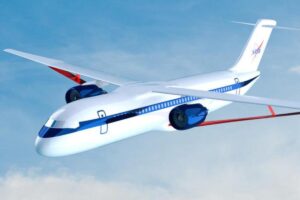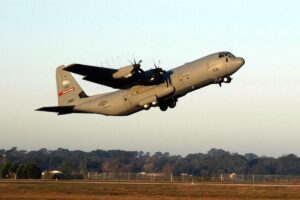Comparing ARINC 429 and MIL-STD-1553 Protocols
Abstract
This white paper provides an in-depth comparison of ARINC 429 and MIL-STD-1553, two fundamental communication protocols in avionics. By exploring their features, applications, and benefits, this document serves as a comprehensive guide for aerospace engineers and system designers looking to optimize data communication in avionics systems. The paper also delves into their historical development, technical specifications, and future trends, offering actionable insights for protocol selection.
Introduction
The aerospace industry depends on reliable and efficient communication protocols to ensure seamless operation of avionics systems. ARINC 429 and MIL-STD-1553 are two dominant standards designed to meet these needs in commercial and military aviation, respectively. Despite their widespread use, these protocols differ significantly in architecture, functionality, and application.
This paper examines these differences and highlights their respective advantages, providing a detailed comparison to aid in selecting the right protocol for specific aerospace requirements.
Historical Background
1.1 ARINC 429
ARINC 429, established by the Airlines Electronic Engineering Committee (AEEC), emerged in the 1970s as a standardized communication protocol for commercial aviation. Its primary objective was to simplify data communication between avionics systems while ensuring reliability and cost-effectiveness.
1.2 MIL-STD-1553
MIL-STD-1553 was introduced in 1973 by the U.S. Department of Defense to address the need for a robust and reliable communication protocol in military aircraft. Designed for mission-critical systems, it incorporates redundancy and error detection mechanisms to ensure high fault tolerance.
Technical Specifications
2.1 ARINC 429
2.1.1 Architecture
ARINC 429 operates on a unidirectional communication model, where a single transmitter sends data to multiple receivers over a twisted pair of wires.
2.1.2 Data Format
- Word Structure: Uses a 32-bit word divided into labels, source/destination identifiers, data fields, and parity bits.
- Standard Labels: Ensures consistency across systems.
2.1.3 Data Rate
- Operates at fixed data rates of 12.5 kbps or 100 kbps, providing simplicity and predictability.
2.1.4 Error Detection
- Incorporates parity checks to identify and mitigate errors during transmission.
2.2 MIL-STD-1553
2.2.1 Architecture
MIL-STD-1553 employs a dual-redundant bus architecture, enabling bidirectional communication between up to 31 remote terminals and a bus controller.
2.2.2 Data Format
- Message Structure: Utilizes command, status, and data words.
- Command/Response Protocol: Facilitates real-time communication.
2.2.3 Data Rate
- Supports a maximum data rate of 1 Mbps, ideal for high-volume data exchange.
2.2.4 Error Detection and Correction
- Advanced error handling mechanisms include Manchester encoding and parity checks, ensuring data integrity.
Key Differences
3.1 Communication Model
- ARINC 429: Unidirectional, point-to-point communication.
- MIL-STD-1553: Bidirectional, allowing interactive communication between devices.
3.2 Redundancy
- ARINC 429: No inherent redundancy.
- MIL-STD-1553: Dual-redundant architecture enhances fault tolerance.
3.3 Scalability
- ARINC 429: Limited scalability due to its point-to-point design.
- MIL-STD-1553: Highly scalable, supporting up to 31 remote terminals.
3.4 Data Speed
- ARINC 429: Fixed speeds of 12.5 or 100 kbps.
- MIL-STD-1553: Operates at up to 1 Mbps.
3.5 Applications
- ARINC 429: Predominantly used in commercial aviation.
- MIL-STD-1553: Widely adopted in military and space systems.
Advantages and Limitations
4.1 ARINC 429
Advantages
- Simplicity: Easy to implement and maintain.
- Reliability: Proven track record in commercial aviation.
- Cost-Effective: Lower implementation costs compared to MIL-STD-1553.
Limitations
- Unidirectional Data Flow: Restricts communication flexibility.
- Scalability: Challenges in expanding system capacity.
4.2 MIL-STD-1553
Advantages
- Robustness: Designed for mission-critical environments.
- Redundancy: Ensures communication reliability.
- Flexibility: Supports complex, multi-terminal systems.
Limitations
- Complexity: Requires higher expertise for implementation and maintenance.
- Cost: Higher initial investment compared to ARINC 429.
Applications
5.1 ARINC 429
- Commercial Aviation: Navigation, flight management systems, and cockpit display integration.
- Helicopters: Simplified avionics communication.
- Business Jets: Cabin management and in-flight entertainment systems.
5.2 MIL-STD-1553
- Military Aircraft: Weapon systems, radar control, and flight management.
- Space Exploration: Satellite communication and control systems.
- Naval Systems: Integrated combat platforms.
Protocol Selection Criteria
6.1 System Requirements
Evaluate communication needs, such as data rate, redundancy, and scalability.
6.2 Application Environment
- ARINC 429: Suitable for commercial aviation with straightforward requirements.
- MIL-STD-1553: Ideal for military and mission-critical applications.
6.3 Budget Constraints
Consider the cost of implementation, maintenance, and upgrades.
6.4 Future Expansion
Assess the potential for system growth and the need for protocol scalability.
Integrating ARINC 429 and MIL-STD-1553 Systems
7.1 Protocol Conversion
Protocol converters enable interoperability between ARINC 429 and MIL-STD-1553 systems.
- Hardware Solutions: Real-time translation for high-performance environments.
- Software Solutions: Cost-effective options for less critical applications.
7.2 Challenges
- Data Mapping: Aligning different data structures and formats.
- Timing Synchronization: Managing delays and ensuring real-time communication.
Future Trends
8.1 Advancements in Protocols
- ARINC 664: Ethernet-based protocol for high-speed communication.
- MIL-STD-1760: Enhanced features for weapon system integration.
8.2 Emerging Technologies
- Artificial Intelligence: Optimizing communication systems.
- IoT in Avionics: Enhancing connectivity and data exchange.
8.3 Standardization Efforts
Collaboration between industry leaders to create unified standards for broader interoperability.
Conclusion
ARINC 429 and MIL-STD-1553 are both vital communication protocols in aerospace systems, each excelling in different domains. While ARINC 429 is tailored for commercial aviation with its simplicity and reliability, MIL-STD-1553 offers the robustness and scalability required for military and space applications. Understanding their strengths, limitations, and integration strategies allows engineers to make informed decisions, ensuring optimal performance in avionics systems.





